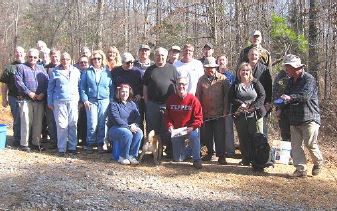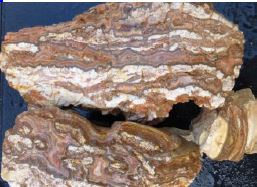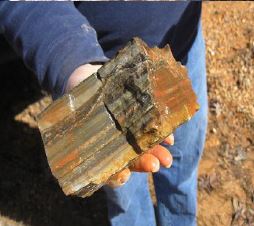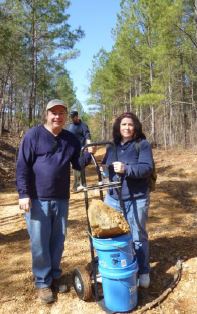Past Field Trips
Banded Green Jasper Field Trip
by Dion Stewart
It is wonderful when everything comes together as planned (and with some good luck); and as rare as that may be, it happened for us on our CCGMS field trip for banded green jasper (technically called “prase”) on Saturday, February 22nd. The weather, which was a perfect 67 degrees and sunny, soon had the twenty six participants stripping down to their short sleeves as they picked up rocks of all sizes off the ground surface and along the roads.


Specimens were everywhere and included druzy quartz layers and vugs, swirled bands of crazy lace agate, and lots of jasper colors in alternating bands of green, brown, red, pink, and occasionally yellow. One member who is a teacher, found a boulder for her classroom that took three people to lift into her car; the boulder showed lace in one area, banded jasper in another, and druzy cavities in a third region. There was so much material in one area that we stopped looking for large specimens and collected a lot of 1 inch size pieces for the “grab bags” that we put out at our Annual Show.
Everyone was very considerate; we traveled in caravan from Summerville (no one got stuck), everyone filled the holes made when they dug up a boulder or cobble, they shared rides up the hill and exchanged specimens, and (happy for me as leader) everyone signed out of the region as they left by 3:30 pm. Many of the participants asked me to let the property owner and the head of the hunting club know how much they appreciated the opportunity to have visited this lovely site in the rolling hills of Chattooga County.


Geologically this region is at the bottom of the Know Group, a Cambrian rock unit that is mostly made of dolomite from the Paleozoic Era of time. The bottom of this group is made up of the Copper Ridge Formation, which has been described in the literature as having a layer of “dense massive chert” in the lower 300 feet. The abundance of colored cherts here is the result of mineralized groundwater flowing through the bottom layers of the Copper Ridge dolomite. The dissolved silica in the waters replaced each thin bed of dolomite with microscopic colored quartz crystals to give us the colorful layers of jasper. The region was folded into a long anticline when the Appalachian Mountains formed nearly 300 million years ago.
